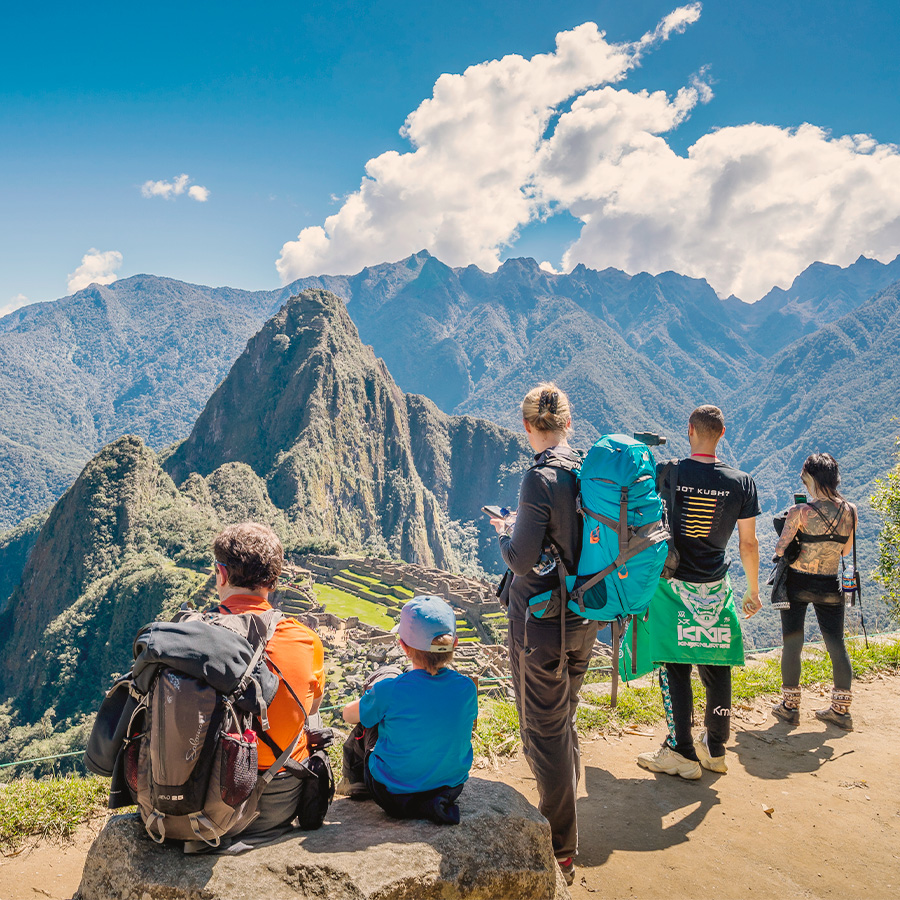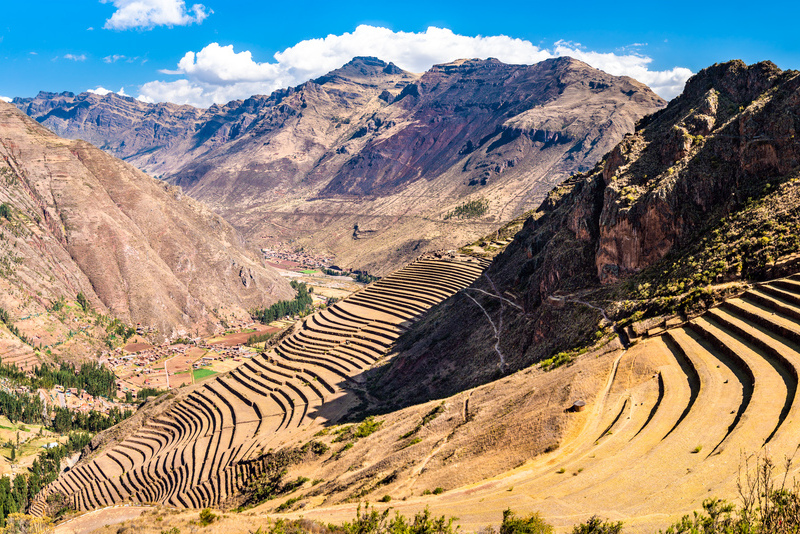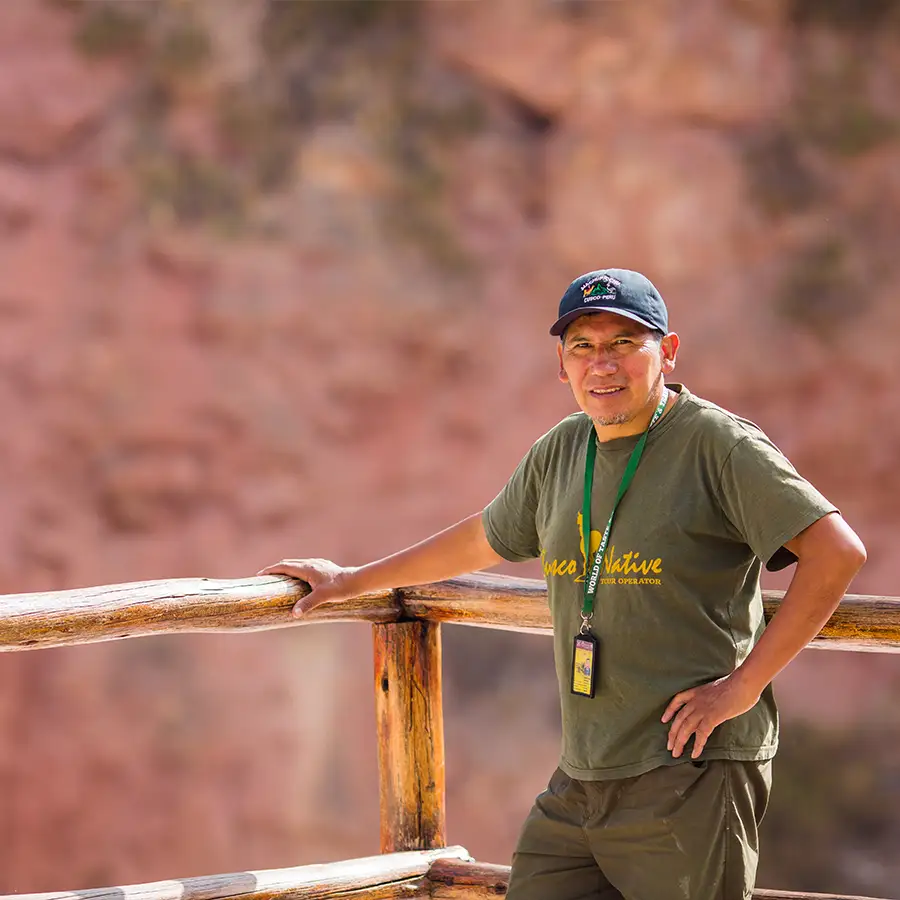


Discover the vibrant cultural heritage of Peru with our curated selection of cultural tours. From ancient Inca traditions to colonial influences, these tours offer a unique insight into the country’s history, art, cuisine, and music. Explore Peru’s diverse cultural scene and gain a deeper understanding and appreciation of its people and traditions. If you don’t see what you’re looking for below, don’t hesitate to contact us so we can help you create a custom tour or itinerary.




 5 Stars - Based on 552 Client
Reviews
5 Stars - Based on 552 Client
Reviews
Discover the vibrant cultural heritage of Peru with our curated selection of cultural tours. From ancient Inca traditions to colonial influences, these tours offer a unique insight into the country’s history, art, cuisine, and music. Explore Peru’s diverse cultural scene and gain a deeper understanding and appreciation of its people and traditions. If you don’t see what you’re looking for below, don’t hesitate to contact us so we can help you create a custom tour or itinerary.

At Cusco Native, we ensure the best prices by operating locally without intermediaries. You can’t find the same itinerary with identical services at a lower price elsewhere.

Reserve your adventure with just a 25% deposit and pay the rest upon arrival in Peru. Postpone your trip for free up to 30 days before the start date!

Local Business

Sustainable

Small Groups

Experienced Team



Didn't find the tour you were looking for? Don't worry! We are experts at building custom tours and treks in Cusco and throughout Peru. Just contact us, tell us about the tour you'd like and let us do the rest..
Peru is a land of rich history, where ancient Inca civilization, pre-Columbian cultures, and Spanish colonial heritage come together. Explore the iconic Machu Picchu, the heart of Cusco, the Sacred Valley, and other historical landmarks, each offering a window into the past. Discover how Peru's unique blend of traditions continues to shape its vibrant culture today.

Cusco, the capital of the Inca Empire, is a city rich in history and culture. It was the political, military, and spiritual center of the Inca civilization. The city's architecture, including the famous Qorikancha (Temple of the Sun) and the impressive Sacsayhuamán fortress, reflects the grandeur of the Inca Empire. Following the Spanish conquest in the 1530s, Cusco became a key city in the Spanish Viceroyalty of Peru, where colonial structures were built on top of Inca foundations. Today, Cusco is a living museum, blending Inca and colonial heritage.

Machu Picchu, located in the Andes at over 2,400 meters above sea level, was built during the 15th century under the reign of Inca Emperor Pachacuti. It is widely believed to have been a royal estate or a religious center, although its precise function is still debated. The site features advanced agricultural terraces, sophisticated water management systems, and remarkable stone architecture. After being abandoned during the Spanish conquest, Machu Picchu remained hidden from the outside world until its rediscovery in 1911 by Hiram Bingham, drawing global attention to its significance.

The Sacred Valley, a region nestled between Cusco and Machu Picchu, was of immense importance to the Inca Empire. It was a royal retreat, a center for agriculture, and a spiritual hub. Major Inca sites in the valley, such as Ollantaytambo, Pisac, and Moray, showcase the Incas’ expertise in agriculture, astronomy, and military strategy. The Sacred Valley’s fertile land was crucial for feeding the empire, while its temples and sacred sites reflected the deep spiritual connection the Incas had with nature.

Puno, located on the shores of Lake Titicaca, is known for its cultural significance and its role in the pre-Inca and Inca periods. The region was home to the Tiwanaku civilization, which influenced Inca culture in terms of agriculture, architecture, and religion. During the Inca Empire, Puno was an important religious center, with the Uros people inhabiting floating islands on the lake. Today, Puno remains a center for traditional Andean culture and is home to the famed annual Festival of the Virgen de la Candelaria.

The Q’eswachaka Bridge, located in the province of Canas, is one of the last remaining traditional Inca rope suspension bridges. This engineering marvel, made entirely from grass, was once part of an extensive network of bridges built by the Incas to connect various regions of their vast empire. The bridge has been maintained and reconstructed by local communities each year using traditional Inca methods, symbolizing the continuity of Inca culture and the strength of communal bonds. It was primarily used for transportation and communication across the rugged Andean terrain.

Arequipa, known as the “White City” due to its colonial-era buildings made from volcanic sillar stone, was founded by the Spanish in 1540. However, the region has a rich pre-Columbian history, with the Andean cultures predating the Inca Empire. Arequipa played an essential role in the Spanish colonial period and became a crucial center of trade and administration. The city is also near Colca Canyon, one of the deepest canyons in the world, where the Incas cultivated terraces that are still in use today.

Colca Canyon, located in southern Peru, is one of the deepest canyons in the world. It was a vital agricultural region for both pre-Inca and Inca civilizations. The Incas developed terracing systems in the canyon to grow crops at different altitudes, a testament to their advanced agricultural techniques. The canyon is also home to the Andean condor, which is revered in Andean culture as a symbol of power and spirituality.

Huacachina is a small desert oasis located near the city of Ica. While it is primarily known for its natural beauty and the dramatic sand dunes surrounding it, the area also has historical significance. The region was part of the Nazca culture, famous for the Nazca Lines, large geoglyphs created in the desert. Though Huacachina itself was developed much later, it lies within a region that played an important role in pre-Inca history.

Lima, founded in 1535 by Spanish conquistador Francisco Pizarro, became the seat of the Spanish Viceroyalty of Peru and a center of Spanish colonial power. The city is rich in colonial architecture, including the Plaza Mayor and San Francisco Church. Before the Spanish arrived, Lima was home to the Lima culture and the Inca Empire’s coastal influence. Today, Lima is a bustling modern city with a deep connection to both colonial and pre-Columbian history.
Peru’s cultural identity is deeply rooted in its Indigenous heritage. Across the Andes, highlands, and valleys, communities like the Quechua and Aymara continue to preserve traditions passed down through centuries — from their language and dress to farming methods, festivals, and worldviews. These living cultures are not just remnants of history; they are vibrant and evolving, offering travelers an authentic connection to the soul of the Andes.

Quechua Communities
In Cusco and the Sacred Valley, Quechua peoples are the direct descendants of the Incas. Their language, also called Quechua, is still widely spoken. Villages like Chinchero, Pisac, Ollantaytambo, and Willoq are known for weaving cooperatives, ancestral agriculture, and deep spiritual ties to the land. Many families still farm terraced fields, raise llamas, and perform rituals to Pachamama (Mother Earth). In places like Patacancha or Misminay, visitors can learn traditional farming or textile dyeing techniques passed down through generations.

Aymara and Uros Peoples
Puno is home to Aymara and Uros communities, who have preserved their own language, cosmology, and way of life. The Uros live on floating islands made of totora reeds, and they maintain ancestral fishing and handicraft traditions. Aymara villages around Chucuito or Ilave blend pre-Inca beliefs with Catholic influences, visible in their festivals, music, and dress. Many still practice ayni, a system of communal work and reciprocity.

Collagua and Cabana Peoples
In Colca Canyon, the Collagua and Cabana peoples are known for their elaborate hat styles and head shaping practices from pre-Columbian times. Though they now speak Spanish and Quechua, many of their agricultural and ritual customs remain. Terraced farming, alpaca herding, and local patron saint festivals reflect a blend of Indigenous and colonial traditions.

Weaving & Textiles (Quechua Communities)
In towns like Chinchero, Pisac, and Ollantaytambo, weaving is not just a skill — it’s storytelling through thread. Using backstrap looms and natural dyes (from cochineal, indigo, and local plants), artisans craft complex patterns representing myths, landscapes, and seasons. Many workshops and cooperatives open their doors to visitors for live demonstrations.
Pottery & Ceramics
In the Sacred Valley, artisans from Raqchi and Urubamba create traditional ceramics with Inca-inspired motifs. Decorative jars, plates, and ceremonial vessels are molded and fired with ancestral methods.
Silverwork & Jewelry
Cusco’s silversmiths carry on traditions of delicate filigree and symbolic Inca iconography. Popular in artisan markets, especially around San Blas, are silver chakana pendants, llama figurines, and earrings inspired by ancient motifs.

Totora Reed Crafts (Uros Islands)
On Lake Titicaca, the Uros people are known for crafting everything from boats to homes using totora reeds. Their artistry extends to decorative animals and dolls made from this buoyant material.
Aymara Textiles & Embroidery
Around Taquile Island and Chucuito, Aymara artisans are celebrated for their colorful handwoven belts, chullos (Andean hats), and embroidered jackets. On Taquile, men are the traditional knitters, passing down knitting skills from father to son.

Colca Textiles & Embellishments
In Chivay and nearby villages, women create intricate embroidered garments with vivid floral patterns — each stitch a reflection of community identity. Shawls, skirts, and hats feature prominently in local dances and fiestas.
Stone & Sillar Carving
Arequipa’s white volcanic stone, sillar, is used not only in architecture but also in carvings and decorative pieces. You’ll often find hand-carved crosses, columns, and religious figures in local workshops.
Peru's landscapes are rich not only in history but in myths passed down through generations. These legends reflect the beliefs, hopes, and fears of ancient civilizations and still resonate with the people today.

The Legend of the Inca's Gold
A tale of immense beauty, Machu Picchu is surrounded by stories of lost treasures. One such legend tells of Atahualpa, the last Incan emperor, and the fabled golden disk that would unite all of Peru. The gold was hidden in Machu Picchu’s caves before the Spanish arrived, and its location remains a mystery.
The Virgin of Qorikancha
In Cusco, the Qorikancha Temple, dedicated to the Sun God Inti, is believed to have housed a sacred virgin. It’s said that the virgin, who held the golden key to the Inca's spiritual life, was the embodiment of the earth goddess Pachamama and could communicate with the spirits of the land.

The Legend of the Birth of the Inca Empire
One of the most famous Peruvian myths comes from the shores of Lake Titicaca. According to Inca mythology, Manco Cápac and Mama Ocllo, children of the sun god Inti, emerged from the sacred lake. They were sent to find the "navel of the world" and establish the Inca civilization. The spot they chose, near Cusco, became the heart of the Inca Empire.

The Legend of the Señor de los Milagros
One of Lima's most cherished legends is that of the Señor de los Milagros (Lord of Miracles). In the 17th century, a Black slave painted a mural of Christ on a wall in Barranco. After a devastating earthquake in 1655, the mural miraculously survived, sparking belief in its divine power. The image of the Señor de los Milagros became a symbol of hope, and each October, Lima celebrates with a grand procession. Thousands of people gather to honor the image, making it one of the most significant religious events in Peru. This legend is a central part of Lima’s spiritual and cultural identity, reflecting both faith and resilience.
Peru’s cities reflect a rich colonial past, where Spanish architecture blends with Indigenous foundations. From Lima to Cusco, churches, plazas, and traditions tell the story of a powerful cultural fusion.

Lima, known as the City of Kings, was the heart of Spanish colonial power in South America. Its historic center, a UNESCO World Heritage Site, features grand baroque churches, colonial mansions, and balconied facades like those on the Casa Aliaga and Palacio de Torre Tagle. The Cathedral of Lima and San Francisco Monastery, with its catacombs, are iconic examples of colonial-era religious architecture.

Cusco is a striking showcase of colonial heritage built atop Inca foundations. The Cathedral of Cusco, constructed over the Inca temple Kiswarkancha, and Iglesia de la Compañía de Jesús reflect the Spanish effort to establish Catholicism and dominance. The San Blas neighborhood features narrow streets and colonial houses, many still inhabited by local artisans.

The Sacred Valley contains colonial churches and towns like Yucay, Calca, and Ollantaytambo, where Spanish and Inca structures coexist. In Chinchero, the 17th-century Iglesia de Nuestra Señora de Monserrat was built on an Inca palace, reflecting the cultural layering of the region.

Arequipa, called the White City, is famed for its sillar stone colonial architecture. The Santa Catalina Monastery is a city within a city, reflecting both religious tradition and colonial urban design. Plaza de Armas and the Cathedral of Arequipa also showcase 16th–18th-century Spanish style with volcanic stonework and baroque elements.

Colonial legacy in Colca Canyon is also reflected in the Iglesia de San Pedro de Alcántara in Cabanaconde, a 17th-century church built by Spanish missionaries. Set against the dramatic backdrop of the canyon, the church features colonial architecture with subtle Indigenous influences. It remains a spiritual and cultural hub for the local Cabana community, who continue to celebrate colonial-era religious festivals that blend Catholic rituals with Andean traditions.

Puno’s colonial heritage is centered around the Puno Cathedral, a baroque-style structure built in the 18th century. Spanish influence is also visible in religious traditions like Fiesta de la Virgen de la Candelaria, which combines Catholic celebration with Andean symbolism.
Peruvian cuisine blends Indigenous traditions with global influences. Each region—from the Andes to the coast—offers unique flavors, ingredients, and time-honored dishes that reflect its cultural roots.

As Peru’s culinary capital, Lima is home to world-renowned cuisine. Coastal flavors dominate, with ceviche as the star—fresh fish marinated in lime, chili, and onions. Other highlights include lomo saltado (stir-fried beef), ají de gallina (creamy chicken stew), and the iconic pisco sour cocktail. Lima showcases Peru’s blend of Indigenous, Spanish, African, and Asian influences.

Cusco’s cuisine reflects Andean heritage, featuring ancient ingredients like quinoa, corn, and potatoes. Try cuy (guinea pig), alpaca steak, chuño (freeze-dried potato), and sopa de quinua. Traditional drinks like chicha de jora (fermented corn) and mate de coca (coca tea) are widely enjoyed.

The Sacred Valley emphasizes earthy, ancestral flavors. Look for pachamanca, a dish cooked underground with meats and vegetables, and humitas, steamed corn cakes. Locally grown corn, potatoes, and native herbs are essential to the valley’s traditional dishes.

Puno’s cuisine centers on ingredients from Lake Titicaca. Enjoy trucha (trout), served grilled or in soups. The area’s Aymara influence is reflected in oca, quinoa, and cancha (toasted corn). Warm soups and hearty stews are ideal for the high-altitude climate.

Arequipa is famous for its spicy and rich flavors. Don’t miss rocoto relleno (stuffed spicy pepper), adobo arequipeño (pork stew), and solterito, a fresh salad of fava beans and cheese. The region’s use of local spices sets its cuisine apart.

Ica blends coastal and Andean flavors into a rich culinary tradition. Signature dishes include carapulcra con sopa seca, a flavorful mix of dried potato stew and seasoned noodles, and chupe de pallares, a creamy lima bean chowder. Seafood is also central, with ceviche, jalea, and chupe de pescado standing out. For dessert, try local favorites like tejas, chapanas, and frejol colado. Ica’s cuisine pairs perfectly with its renowned wines and pisco.
Peru's cultural soul is heard in its melodies and seen in its vibrant dances — from highland panpipes echoing through ancient valleys to Afro-Peruvian rhythms pulsing on the coast. Each region offers a unique soundscape shaped by Indigenous, Spanish, African, and mestizo influences.

Highland Melodies
In Cusco and the Sacred Valley, traditional music features panpipes (zampoñas), quenas (Andean flutes), charangos, and drums (bombo). Music often accompanies agricultural cycles and festivals like Inti Raymi or Corpus Christi.
Traditional Dances of the Sacred Valley
Folk dances such as the Huayno (a lively, rhythmic couple’s dance) and the Saqra (a playful devil dance) are common during local festivities. Costumes are elaborate, with colorful skirts, embroidered vests, and ornate masks reflecting regional identity.

Capital of Peruvian Folklore
Puno is famous for its dazzling folk dance festivals, especially La Virgen de la Candelaria, where thousands perform traditional dances like the Diablada, Morenada, and Caporales to the beat of brass bands and rhythmic drums.
Aymara & Quechua Music
Indigenous music in Puno blends haunting vocals with traditional instruments like pututos (conch shell horns) and sikus (panpipes), often played during seasonal rituals and community events.

Wititi Dance
Recognized by UNESCO, the Wititi dance is performed in the Colca Valley by young men dressed in women’s clothing as a symbol of courtship and festivity. Accompanied by harp, violin, and accordion, it is central to local celebrations.
Arequipeño Folk Music
In Arequipa, the Marinera Arequipeña and yaravíes (slow, melancholic songs) reflect colonial and Indigenous fusion. These are often performed during town festivals and peñas (folk music venues).

Afro-Peruvian Rhythms
In Lima and along the coast, Afro-Peruvian music flourishes through festejo, landó, and zamacueca. These rhythmic dances are driven by instruments like the cajón (box drum), guitar, and quijada (jawbone rattle). Cultural hubs in Barranco and downtown Lima offer performances and dance lessons.
Criollo Music
A blend of Spanish guitar and poetic lyrics, música criolla is Lima’s urban soundtrack. It's commonly heard during live music nights or local celebrations such as El Día de la Canción Criolla.
Marinera
In Lima, the Marinera Limeña takes center stage. This refined dance of courtship blends Spanish, Indigenous, and African elements, known for its flowing skirts, handkerchief twirls, and poised footwork. National competitions celebrate it each January in Trujillo, but peñas across Lima keep the tradition alive year-round.

Cusco Native Tours is a sustainable and ethical tour operator founded in 2008 by Renato Auca Fuentes, a native cusqueño of Quechua origin. Our company offers unique and authentic tours and treks throughout Peru, showcasing the country’s rich history, vibrant culture, and stunning natural beauty.

Personalized tours to Machu Picchu and other iconic destinations, handcrafted by passionate local experts.
2025 Cusco Native Tours. All rights reserved.